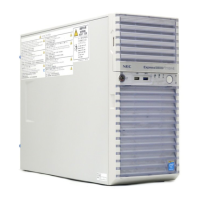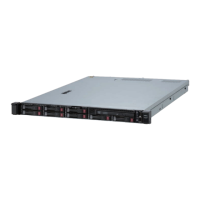SSA Scripting 83
Drive=N
You can use Drive=N instead of specifying the actual paths (Drive=1E:1:1, 1E:1:2).
Advantage
You can specify the number of drives needed for the configuration, and the scripting software selects the first
available drives based on increasing path. This command is most useful when all drives in the configuration
are the same size.
Example
Add a logical drive to the configuration using four physical drives:
Controller=Slot1
Array=A Drive=4
LogicalDrive=1
RAID=5
Drive=*
You can use Drive=* instead of specifying the actual paths (Drive=1E:1:1, 1E:1:2).
Advantage
You can use all available drives for the configuration without knowing their number or actual path.
For this command to execute, all configuration rules must be met. For example, if only two physical drives
exist, the scripting software uses both drives, but does not create volumes that require more than two drives,
such as a RAID 5 volume.
Example
Add a logical drive to the configuration using all unassigned drives:
Controller=Slot1
Array=A
Drive=*
LogicalDrive=1
RAID=5
In this example, three or more physical drives must be available to support the RAID level.
OnlineSpare=N
You can use OnlineSpare=N instead of specifying the actual paths (OnlineSpare=1E:1:1, 1E:1:2).
Advantage
You can specify the number of spares needed for the configuration, and the scripting software selects the
first available drives based on increasing path. This command is most useful when all drives in the
configuration are the same size.
Example
Add a logical drive to the configuration using two spare drives:
Controller=Slot1
Array=A
Drive=1E:1:1, 1E:1:2
OnlineSpare=2
LogicalDrive=1
RAID=1

